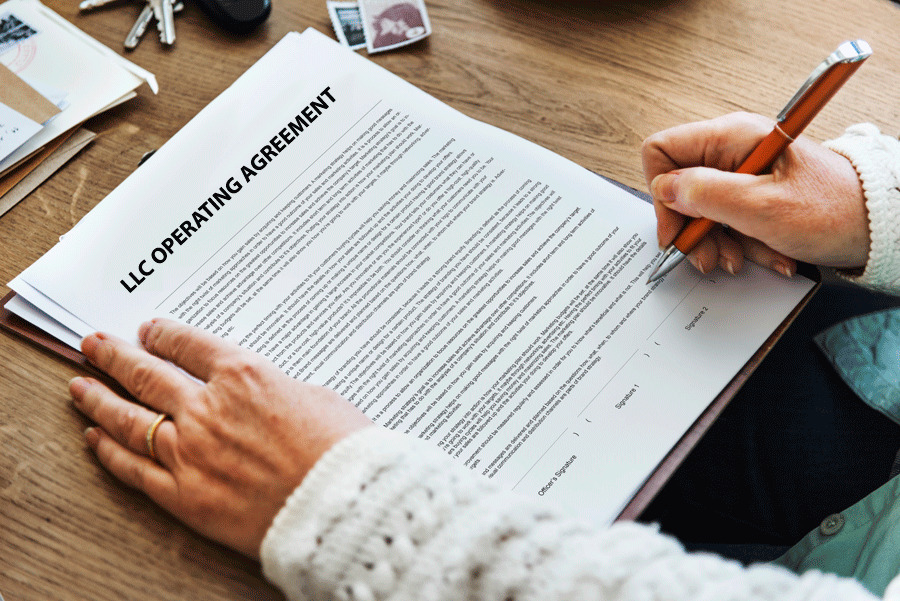An integral part of the transaction between the buyer and seller of a vehicle is filling out and signing the paperwork which proves that both parties agree on the terms of the exchange. Regardless of whether the car is old or new, all the relevant information about the transaction must be recorded. Recording and signing a contract helps reduce the possibility of future conflict over the transaction. The document used to record the transaction details is the vehicle purchase agreement. For it to be used, both parties must understand what it is and what should be included.
A vehicle purchase agreement is a legally binding document used by the seller and the buyer to finalize the sale or purchase of a vehicle.
It contains detailed information about the parties involved, the price, the vehicle, and the purchase terms. The purchase terms are used to distinguish between the different subtypes of the agreements. Therefore, the vehicle purchase agreement is also referred to as a vehicle contract or car purchase agreement.
Free Downloadables
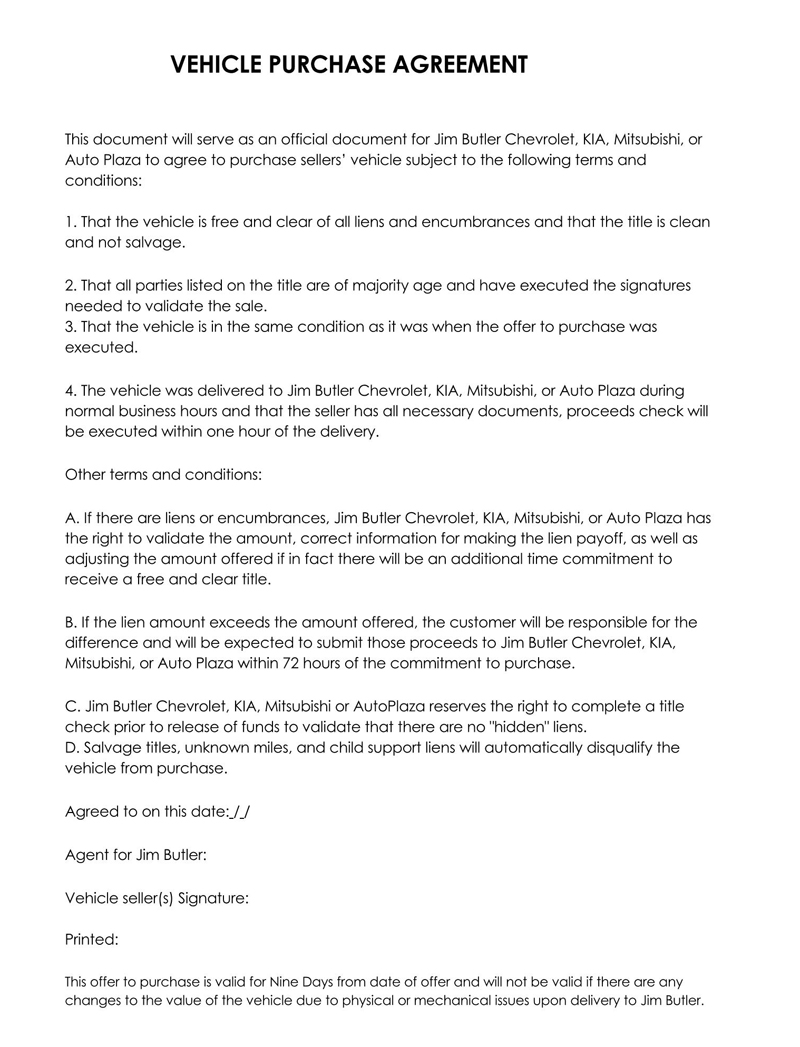
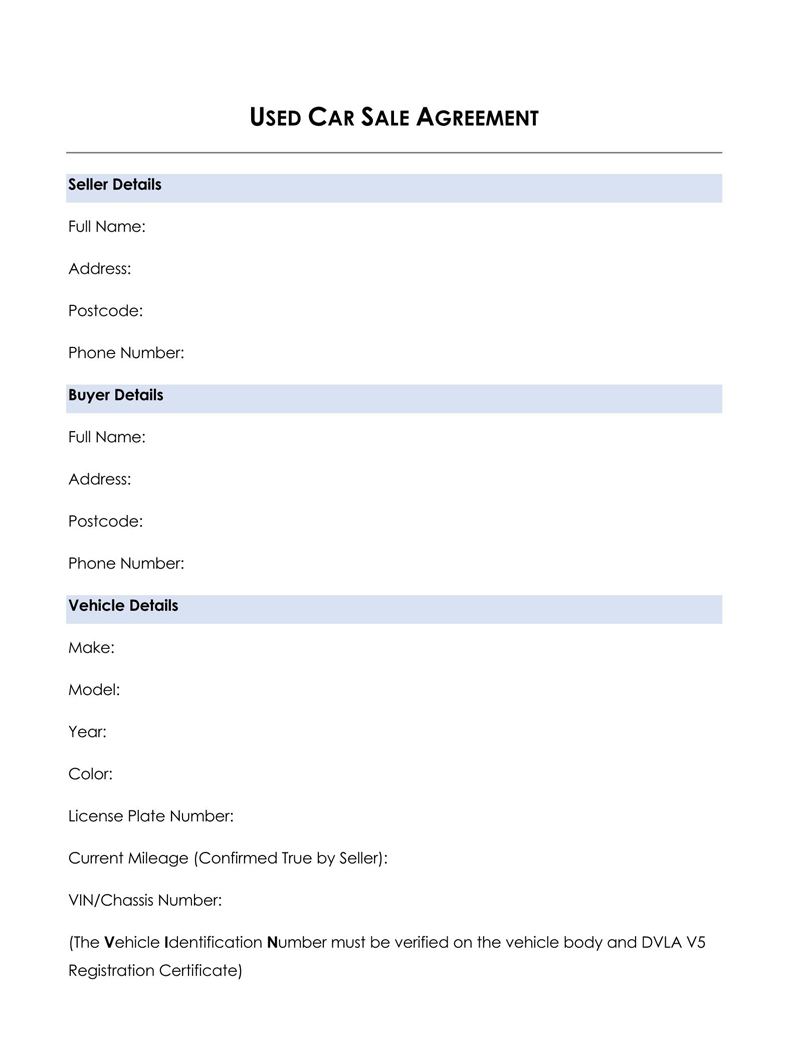
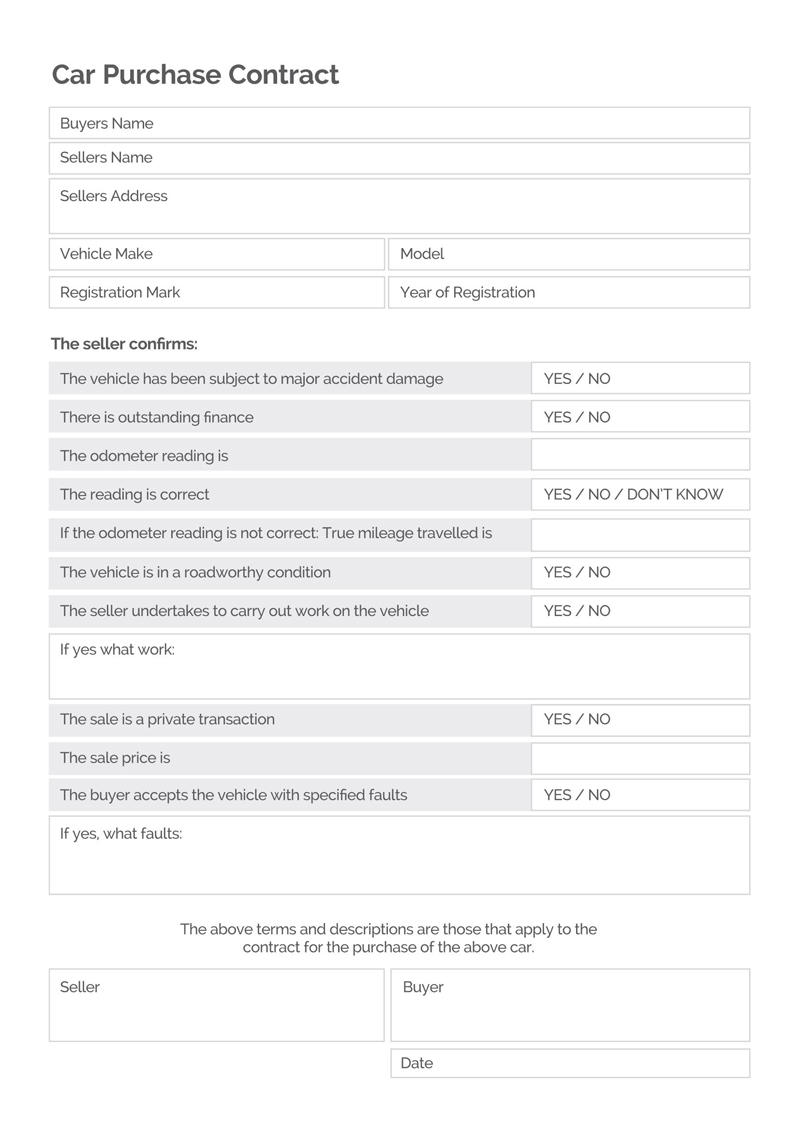
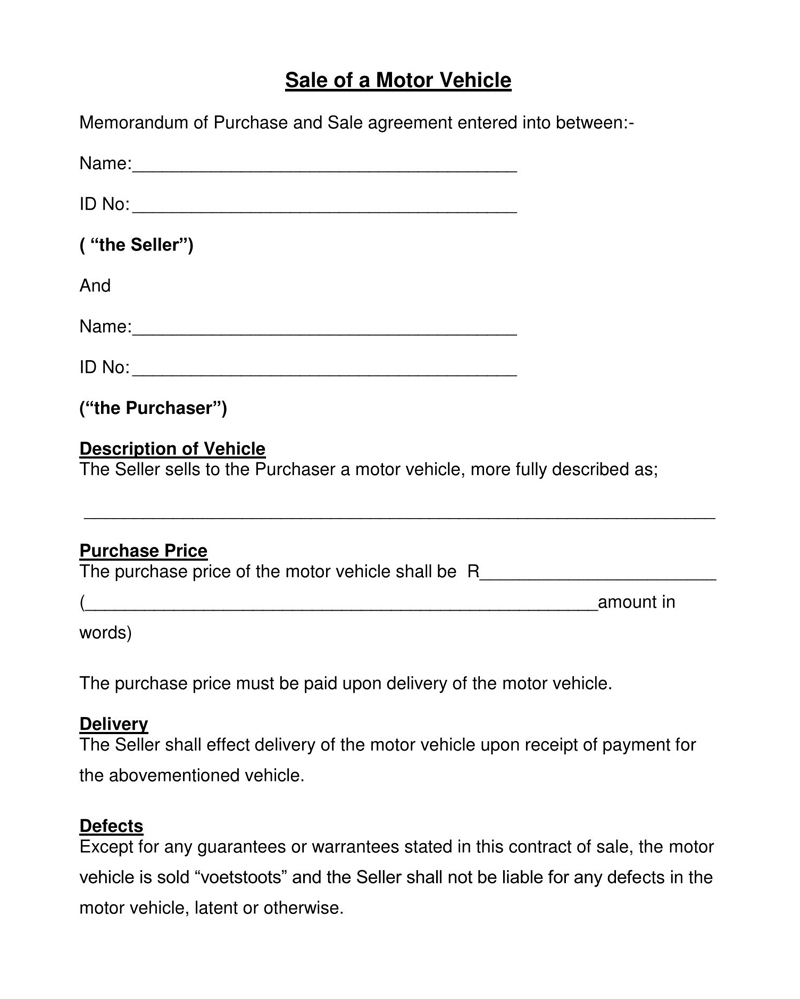
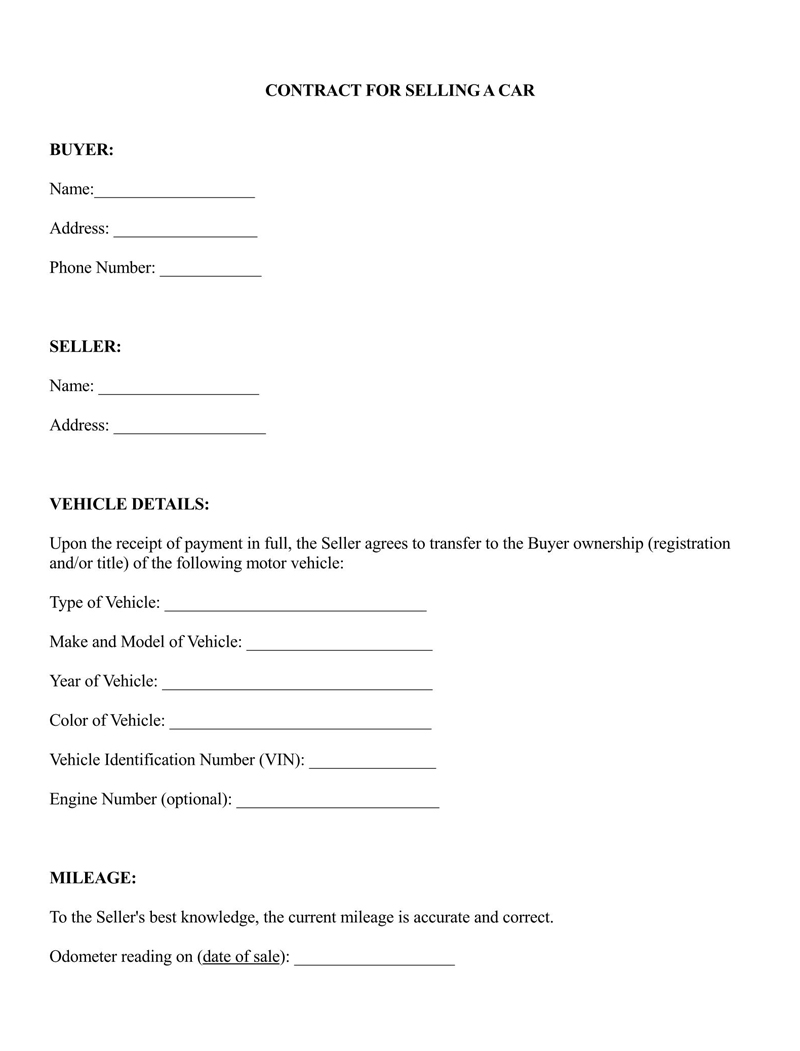
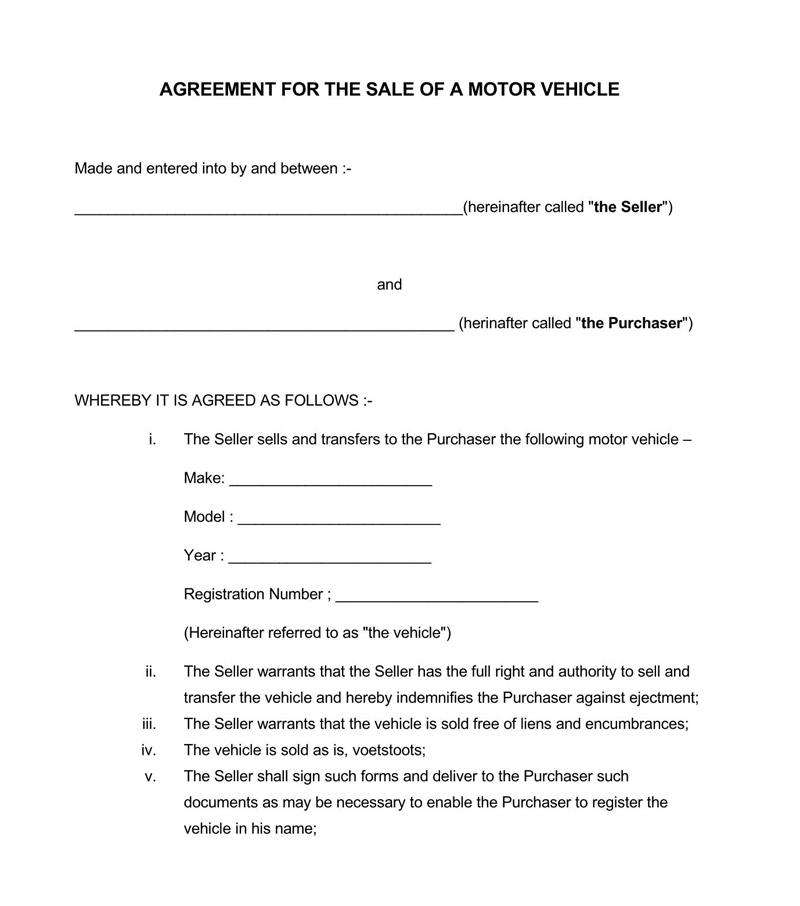
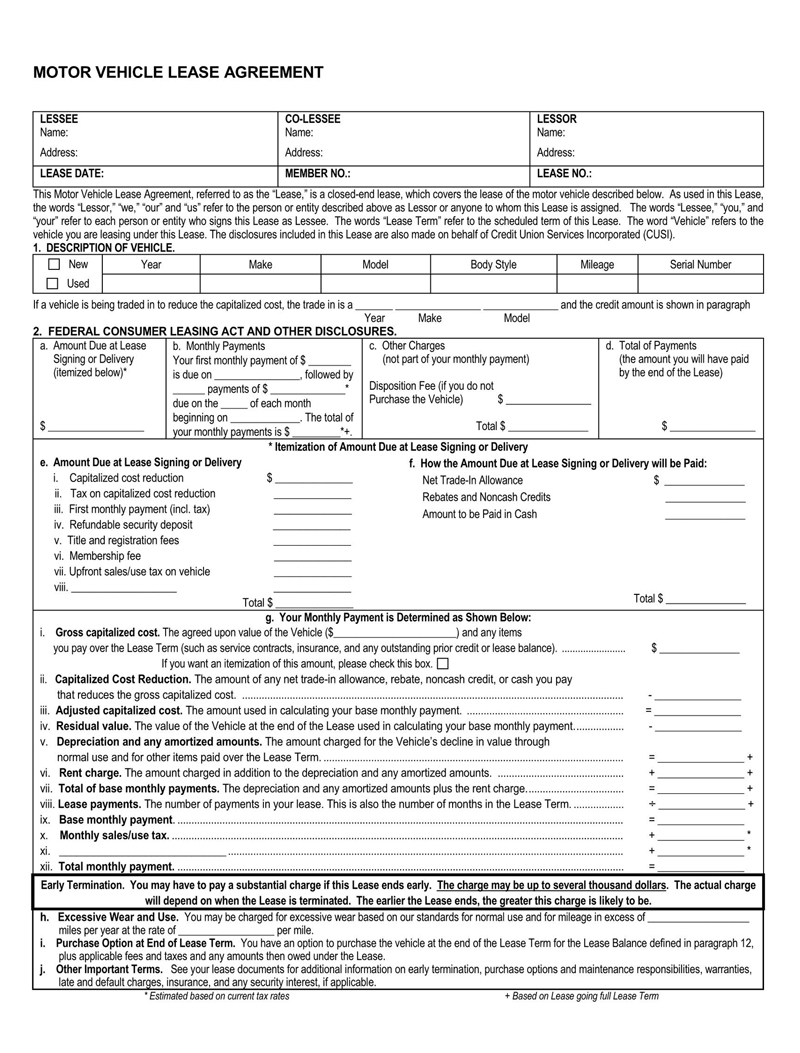
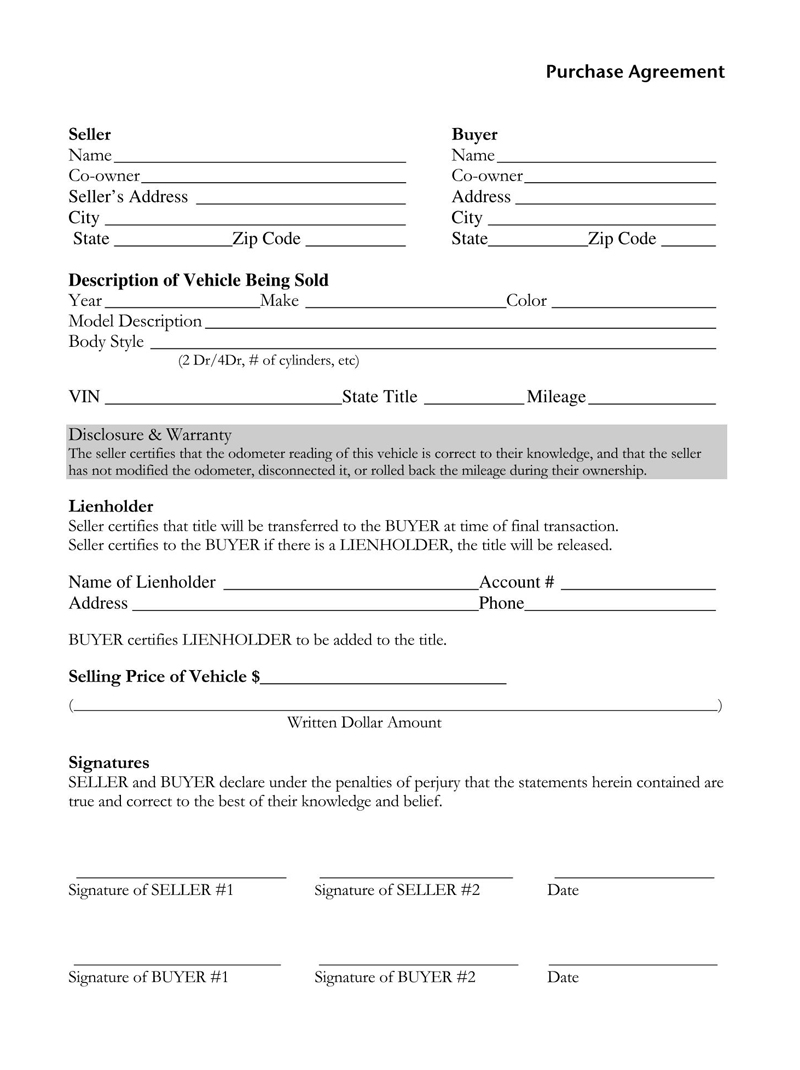
Basic Parts of the Vehicle Purchase Agreement
It should contain adequate information about the car’s transaction to ensure it is comprehensive, unlike a bill of sale, it is typically a page long and only used in private sales where the buyer makes full payment during the purchase.
The following parts should be included in the agreement:
Seller’s information
It should indicate the seller’s name, address, birth date, and social security number. In addition, if the seller is a representative of an automobile company, then the company’s name must also be included in the agreement.
Buyer’s information
The buyer’s details should be obtained from their driver’s license. The details should include the buyer’s name, address, birth date, and social security number. If the vehicle is co-owned with another individual, that individual’s details must be included in the agreement.
Vehicle’s information
The agreement should also include a detailed description of the car. The description should include the make, model, color, VIN, and car mileage. These details are essential in identifying the vehicle at the center of the transaction.
Sale and pricing information
The car’s total price should be indicated in the agreement. It should be broken down into the vehicle’s selling price, the price of additional options listed in the agreement, fees such as document fees, destination fees, advertising fees, dealership fees, and registration fees, among others. The down payment and sales tax should also be indicated.
Financing information
Financing information like the total amount being financed (loan), annual percentage rate charged each year, the trade-in value, financial charges, interest rate of the loan, among other details, should be provided. In addition, other details like the total payments for the vehicle, the amount paid as down payment, monthly installments, length of the payment term should also be indicated.
How to Draft a Purchase Agreement
A well-outlined step-by-step process should be followed when writing the agreement. The process will ensure that the terms of the agreement are appropriately documented. If a disagreement arises, both parties can refer to the contract terms to settle disputes.
The process includes the following:
Identify the seller and buyer
The agreement should identify who the buyer and the seller are. The legal names of both parties should be indicated, along with their addresses and driving license numbers. A statement outlining a reason for the agreement should be provided. It should clearly state that the agreement is for purchasing a vehicle.
Identify the vehicle
Secondly, a detailed description identifying the vehicle should be provided. It should include the body type, interior color, and odometer reading, among other details. Any unique features of the car should also be included in the description. The condition of the car at the time of purchase should be indicated.
The document should outline if the vehicle is being sold’ to help determine if the buyer will be liable to any issues the car may have. Any issues or problems the vehicle may have should also be indicated to show full disclosure during the sale.
Review the information
Next, both the seller and the buyer should review the information that has been outlined to ensure that each detail is accurately written. False claims will lead to an invalid agreement. Minor details like the repair or replacement of the odometer or other parts of the car should be indicated to ensure that the agreement captures the vital details about the car and the transaction.
Date of sale and purchase price
The date of sale and the purchase price, along with other financial details regarding the purchase of the car, such as the payment method and inclusion of a sales tax to the price, should then be indicated. The agreement may also include a payment plan as agreed by both the buyer and the seller. The agreement should also include the terms surrounding late payments or failed payments
Delivery method
The next step should indicate the method to deliver the vehicle to the buyer’s preferred destination. The document should also name who will be responsible for delivering the car as well as covering the expenses incurred, such as toll charges if it is being carried by truck. Delivery methods may include shipping the car, having the seller deliver the car, or the buyer can pick it up. A third party may also deliver the car.
Title status
The status of the title should also be indicated to help identify who is holding it. The titleholder will be responsible for transferring it to the buyer. The transaction will be quick and easy if the vehicle title is free from liens. However, if a bank holds it, the buyer will be required to first make a direct payment to the bank to pay off the debt and then pay the remaining amount to the seller. The amount paid to the seller is determined by subtracting the amount paid off to the bank from the selling price.
Sign and date
The contract should conclude with signatures from both the buyer and the seller. The date of signing should also be indicated. Once signed, copies of the agreement should be made, with one party retaining the original and the other receiving a copy. In private purchases, parties should consider signing the agreement in the presence of a witness or notary public.
Things to Must Keep in Mind
Before the purchase agreement can be signed, crucial consideration on several factors that may affect the agreement should be made. Both parties (seller and buyer) should have a clear understanding of these factors and why they are important.
The factors that both parties should consider are the following:
Any potential mistakes
The buyer and the seller should ensure that accurate details are captured in the agreement. Reviewing the document will help reduce the risk of future issues. It will also help ensure that nothing has been left out of the agreement.
Any extra fees
It is effortless for extra fees to be added to the contract. Any extra or hidden fees should be discussed before the agreement is signed to ensure that both parties are on the same page. If both parties agree to remove the extra fees, zero can be indicted next to the fees to show that no amount should be paid. The contract can also be reprinted without the extra fee(s).
Any charges on items
If there are any free add-ons to the previously promised vehicle, they should be indicated in the agreement. The charged amount indicated next to the item should be marked as zero. The item can be crossed off, and a zero-mark added. The contact can also be reprinted without the free items.
Extras you haven’t requested for
The agreements should only contain items that have been requested. Any extra items that haven’t been requested should be stricken out of the contract, or the document should be reprinted to remove them. The extra charges should also be subtracted from the total amount.
The interest rate
The interest rate on financing should match what is indicated in the contract. If the agreed amount is not reflected on the contract, signing should not occur. Before the agreement can be signed, the interest rate should be changed.
The amount you paid as a down payment
The amount paid as a down payment should be reflected in the contract. Failure to confirm the indication of the correct amount can lead to an increase in the subsequent amount paid and possibly an overpricing of the vehicle.
The worth of your trade-in
The offer made for the vehicle should match the car’s trade-in value. The agreement will act as a point of reference in the future; hence it is crucial to record the accurate value. In addition, both parties should ensure that the contract is error-free.
Frequently Asked Questions
The vehicle purchase agreement is a legally binding document. It aims to convey the verbal agreement between the buyer and the seller in writing. Once the agreement is signed, both the buyer and the seller are legally bound to fulfill the contract terms.
No, the vehicle purchase agreement is not the same as the bill of sale. While the agreement is used to ensure that both the buyer and the seller are bound to the contract, the vehicle bill of sale is used as proof that a transaction has taken place and possession of the car has been transferred to a new owner.
The bill of sale is mainly used for the private sale of a car to help register the new ownership of the vehicle, while the agreement is used regardless of whether or not a private sale is taking place.
Once both parties sign the agreement, they are bound to the contract terms. In addition, they must each fulfill their part of the agreement.
In private purchases, an individual can write their agreement; however, when the purchase is made from a dealer, then they will be responsible for writing the agreement. Therefore, when writing one’s own agreement, it is advisable to use a pre-designed template to ensure that no detail is left out of the document.








